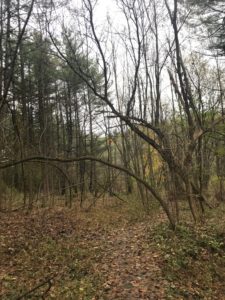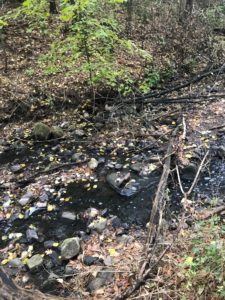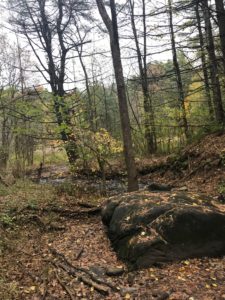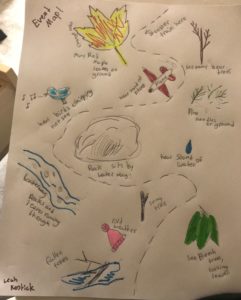- New Spot
- New Spot
Google Map:
https://www.google.com/maps/place/42°16’36.3%22N+71°08’32.9%22W/@42.2767539,-71.1446609,17z/data=!3m1!4b1!4m9!1m2!10m1!1e2!3m5!1s0x0:0x0!7e2!8m2!3d42.2767456!4d-71.1424844
Leopold – description of my new spot
The cool wind is brushing my face and shifting and turning the leaves that lay beneath my feet. The overstory is quite abundant, tall trees stand as maples, oaks, and Norway spruces. The Spruces tower above me and at my feet cones rest. The understory is quite bare the leaves of red, and sugar maples cover the ground as well as red and white oak leaves. There colors spread the floor as a collage, telling the story of the seasons. Winter is coming. The leaves shedding the trees predict the upcoming winter. I see no animals and hear no distant birds showing their presents in the forest. There are no traces of any animals present, making the sounds of the forest only consist of the wind. It brushes through the trees singing the sound of the weather. The city that I stand in is Boston, resulting in me being able to see the street. I hear the sound of the automobiles rushing by polluting the sounds of the forest. The terrain is slanted pointing up the hill to the water tower that rests on the top. The forest is so spread out causing me to believe there is logging done in these parts of the woods. The trees are old and wise, they are thick and mighty. The light penetrates through the trees giving me a small sensation of warmth that heats my body as I stand on this chilly day.
Holland – Comparison of spots
The phenology of the two landscapes are quite different. When visiting the two sites in the early afternoon the light does not penetrate through the forest in the same way. The trees in Centennial woods are thicker, meaning less light reaches the forests floor in my spot. The natural world is always changing as I see in these two spots as the winter approaches. In the area in Boston the trees are at a slant, yet in my spot in Burlington, the land is flat but the sides around me have an uphill slope. The trees in these areas are, for the most part, similar. In Boston, the forest covers itself with Norway’s spruces, oaks, and maples. In centennial woods, the maple trees are very present as well, when shedding their leaves, it is seen, that the ground is covered in all different colors, as the woods in Boston display too. The understory is much more abundant in Centennial woods followed by an increasingly large amount of Eastern white pines then in the new spot. The spot in Centennial woods has a larger number of snags and fallen trees, and the new spot has only a couple trees resting on the ground. In both spots no animals have been spotted as many are getting ready for hibernation or have already begun. Because the area is more secluded in Centennial woods I would anticipate more animal activity throughout the year. The natural area in each place will undertake incredible change with this upcoming winter, many trees will continue to lose their leaves, animals will go into hibernation, and new species will become present in the land.






Recent Comments